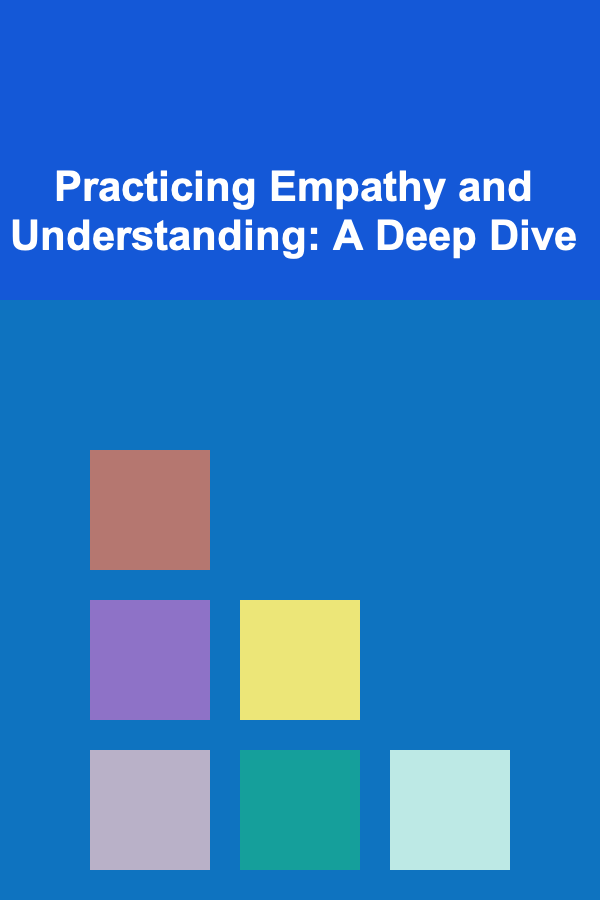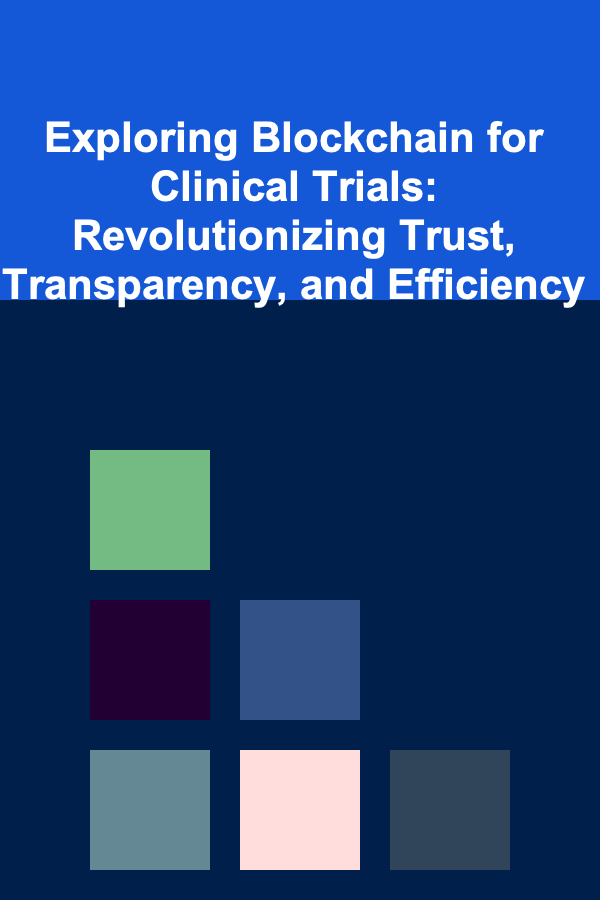
Practicing Empathy and Understanding: A Deep Dive
ebook include PDF & Audio bundle (Micro Guide)
$12.99$10.99
Limited Time Offer! Order within the next:

In an increasingly polarized world, the ability to practice empathy and understanding is more crucial than ever. It's the cornerstone of healthy relationships, effective communication, and a more compassionate society. Empathy, often described as the ability to understand and share the feelings of another, goes beyond simple sympathy or pity. It requires actively stepping into another person's shoes, acknowledging their unique perspective, and validating their experiences, even if you don't necessarily agree with them. Understanding, on the other hand, involves grasping the reasons behind someone's actions, beliefs, or emotions. It seeks to answer the "why" behind the "what," fostering tolerance and reducing judgment. This article explores the depths of empathy and understanding, providing practical strategies and techniques to cultivate these essential skills.
The Foundation: What are Empathy and Understanding?
Before delving into the how, it's crucial to establish a clear understanding of what empathy and understanding truly entail.
Empathy: Feeling With, Not Just For
Empathy is often confused with sympathy, but there's a significant difference. Sympathy involves feeling for someone, often with a sense of pity or compassion. It maintains a distance between the observer and the subject. Empathy, conversely, involves feeling with someone. It's about immersing yourself in their emotional state, attempting to experience the world from their perspective. Neuroscience suggests that mirror neurons, which fire both when we perform an action and when we observe someone else performing that action, play a crucial role in empathy. These neurons allow us to simulate another person's experiences, giving us a visceral understanding of their emotions.
There are different types of empathy:
- Cognitive Empathy: Understanding another person's perspective and how they think, without necessarily feeling their emotions. This is sometimes referred to as "perspective-taking." It's useful in negotiations, leadership, and conflict resolution.
- Emotional Empathy: Feeling the emotions of another person. This is often described as "catching" someone's feelings. While powerful, it can also lead to emotional exhaustion if not managed effectively.
- Compassionate Empathy: Going beyond understanding and feeling, and taking action to help someone in need. This involves both emotional understanding and a desire to alleviate suffering.
Understanding: Seeking the "Why"
Understanding goes hand-in-hand with empathy. It involves actively seeking to comprehend the reasons behind someone's actions, beliefs, or emotions. It's about asking yourself, "Why might they feel this way?" or "What experiences might have led them to this conclusion?" Understanding requires a willingness to consider alternative explanations and to challenge your own assumptions. It's not about condoning harmful behavior, but rather about comprehending the context in which it occurred.
Understanding is built upon:
- Active Listening: Paying close attention to what someone is saying, both verbally and nonverbally, without interrupting or judging.
- Curiosity: Asking open-ended questions to gain deeper insights into their experiences and perspectives.
- Contextual Awareness: Considering the individual's background, culture, experiences, and current circumstances.
- Challenging Assumptions: Questioning your own biases and preconceived notions.
Practical Strategies for Cultivating Empathy and Understanding
Developing empathy and understanding is an ongoing process that requires conscious effort and practice. Here are some practical strategies you can implement in your daily life:
1. Active Listening: The Foundation of Connection
Active listening is more than just hearing what someone is saying; it's about truly engaging with their message and demonstrating that you understand. It involves:
- Paying Attention: Give the speaker your full attention. Minimize distractions, make eye contact (if appropriate), and focus on their words and body language.
- Showing That You're Listening: Use nonverbal cues such as nodding, smiling, and making appropriate facial expressions to show that you're engaged.
- Providing Feedback: Paraphrase or summarize what the speaker has said to ensure that you understand their message correctly. For example, you could say, "So, what I'm hearing is that you're feeling frustrated because..."
- Deferring Judgment: Resist the urge to interrupt or offer solutions before the speaker has finished. Focus on understanding their perspective first.
- Responding Appropriately: Offer genuine and supportive responses. Avoid giving unsolicited advice or minimizing their feelings.
For example, instead of saying "You shouldn't feel that way," try saying "It sounds like you're going through a really tough time."
2. Perspective-Taking: Stepping Into Their Shoes
Perspective-taking involves actively trying to see the world from another person's point of view. This requires putting aside your own beliefs and assumptions and attempting to understand their experiences and motivations.
Here are some ways to practice perspective-taking:
- Imagine Their Situation: Ask yourself, "What would it be like to be in their situation?" Consider their background, their challenges, and their goals.
- Consider Their Values: Think about what is important to them. What are their values and beliefs? How might these values influence their decisions?
- Listen to Their Stories: Pay attention to the stories people tell about their lives. These stories often reveal their perspectives and values.
- Read Diverse Literature and Watch Diverse Films: Immerse yourself in stories from different cultures and perspectives to broaden your understanding of the human experience.
A useful technique is to actively consider the potential reasons why someone might be acting in a way that seems illogical or offensive to you. Instead of immediately judging, try to find a plausible explanation rooted in their experiences.
3. Emotional Awareness: Recognizing and Managing Your Own Feelings
Empathy requires a strong understanding of your own emotions. If you're not aware of your own feelings, it will be difficult to recognize and understand the emotions of others. Emotional awareness involves:
- Identifying Your Emotions: Learn to recognize and name your emotions. Pay attention to your physical sensations, thoughts, and behaviors.
- Understanding the Roots of Your Emotions: Explore the reasons behind your emotions. What events or situations trigger certain feelings?
- Managing Your Emotions: Develop healthy coping mechanisms for dealing with difficult emotions. This might involve mindfulness practices, exercise, or talking to a therapist.
By understanding your own emotional landscape, you'll be better equipped to navigate the emotional landscape of others. For example, if you're feeling angry, it's important to acknowledge that anger and manage it appropriately before attempting to empathize with someone else. Uncontrolled anger can easily lead to misinterpretations and reactive responses that hinder understanding.
4. Suspending Judgment: Creating a Safe Space for Sharing
Judgment can be a major barrier to empathy and understanding. When you judge someone, you're creating a barrier between yourself and them. To foster empathy, it's essential to suspend judgment and create a safe space for sharing.
Here are some ways to suspend judgment:
- Challenge Your Assumptions: Question your own biases and preconceived notions. Are your judgments based on facts or stereotypes?
- Focus on Understanding, Not Agreeing: Remember that empathy doesn't require agreement. You can understand someone's perspective without necessarily agreeing with their viewpoint.
- Practice Non-Judgmental Observation: Observe people and situations without labeling or categorizing them. Simply notice what is happening without adding your own interpretations.
- Recognize Your Own Imperfections: Remind yourself that everyone makes mistakes and has flaws. This can help you be more compassionate towards others.
Think about situations where you felt judged and how that affected your willingness to be open and honest. Aim to create the opposite environment for others.
5. Asking Open-Ended Questions: Encouraging Deeper Conversation
Open-ended questions encourage people to share more information and elaborate on their thoughts and feelings. Closed-ended questions, on the other hand, can limit the conversation and prevent you from gaining a deeper understanding.
Examples of open-ended questions:
- "Can you tell me more about that?"
- "How did that make you feel?"
- "What are your thoughts on that?"
- "What led you to that decision?"
Avoid questions that can be answered with a simple "yes" or "no." Instead, focus on questions that invite the speaker to share their experiences, perspectives, and feelings.
For example, instead of asking "Did you like the movie?", ask "What did you think of the movie?" This encourages a more detailed and insightful response.
6. Mindfulness and Meditation: Cultivating Present Moment Awareness
Mindfulness and meditation practices can help you become more aware of your thoughts, feelings, and sensations in the present moment. This increased self-awareness can make you more empathetic and understanding.
Mindfulness involves paying attention to the present moment without judgment. It can be practiced through meditation, yoga, or simply by focusing on your breath.
Regular mindfulness practice can help you:
- Reduce reactivity: Become less likely to react impulsively to challenging situations.
- Increase emotional regulation: Manage your emotions more effectively.
- Enhance self-awareness: Gain a deeper understanding of your thoughts, feelings, and behaviors.
- Improve focus and concentration: Pay closer attention to what others are saying.
Even just a few minutes of daily mindfulness practice can make a significant difference in your ability to empathize and understand others.
7. Challenging Your Own Biases: Recognizing and Overcoming Prejudice
Everyone has biases, both conscious and unconscious. These biases can affect how we perceive and interact with others. To truly practice empathy and understanding, it's essential to challenge your own biases and work to overcome prejudice.
Here are some ways to challenge your biases:
- Recognize Your Biases: Reflect on your own beliefs and assumptions. Are there certain groups of people that you tend to judge negatively?
- Seek Out Diverse Perspectives: Read books, watch films, and listen to podcasts from people with different backgrounds and experiences.
- Engage in Meaningful Conversations: Talk to people from different cultures, religions, and socioeconomic backgrounds. Ask them about their experiences and perspectives.
- Examine Your Language: Pay attention to the language you use. Are you using stereotypes or generalizations?
- Be Willing to Be Wrong: Be open to the possibility that your beliefs are incorrect. Be willing to change your mind based on new information.
Acknowledging and addressing your biases is an ongoing process, but it's a crucial step towards becoming a more empathetic and understanding person.
8. Practicing Gratitude: Cultivating a Positive Mindset
Gratitude involves focusing on the positive aspects of your life and appreciating what you have. Cultivating a grateful mindset can make you more empathetic and understanding.
When you're grateful, you're more likely to:
- Be optimistic: See the good in people and situations.
- Be compassionate: Feel empathy for others.
- Be resilient: Cope with challenges more effectively.
- Be less judgmental: Accept others for who they are.
You can practice gratitude by keeping a gratitude journal, expressing appreciation to others, or simply taking a few moments each day to reflect on the things you're grateful for.
A simple exercise is to write down three things you are grateful for each day. This helps shift your focus to the positive and can improve your overall well-being, making you more receptive to understanding others.
9. Seeking Feedback: Learning from Others' Perspectives
Asking for feedback from others can provide valuable insights into your own behavior and how you are perceived. This can help you identify areas where you can improve your empathy and understanding.
When seeking feedback, it's important to:
- Be specific: Ask for feedback on specific behaviors or situations.
- Be open to criticism: Listen to the feedback without getting defensive.
- Ask clarifying questions: If you don't understand something, ask for more information.
- Thank the person for their feedback: Show that you appreciate their honesty.
For example, you could ask a friend, "I'm trying to be a better listener. Do you have any suggestions for how I can improve?"
10. Reading Fiction: Expanding Your Emotional Range
Reading fiction is a powerful way to develop empathy and understanding. By immersing yourself in the lives of fictional characters, you can experience a wider range of emotions and perspectives.
Fiction allows you to:
- Step into another person's shoes: Experience the world from their point of view.
- Explore different cultures and experiences: Learn about people from different backgrounds.
- Develop emotional intelligence: Understand and manage your own emotions and the emotions of others.
- Increase your capacity for compassion: Feel empathy for characters who are suffering.
Choose books that feature diverse characters and perspectives. Pay attention to the characters' thoughts, feelings, and motivations. Consider how their experiences shape their actions.
Overcoming Barriers to Empathy and Understanding
While the above strategies are helpful, several common barriers can hinder our ability to practice empathy and understanding. Recognizing and addressing these barriers is crucial for personal growth.
- Emotional Exhaustion/Burnout: Constantly being exposed to the suffering of others can lead to emotional exhaustion. It's important to practice self-care and set healthy boundaries to prevent burnout.
- Personal Stress and Anxiety: When you are overwhelmed by your own problems, it can be difficult to focus on the needs of others. Prioritize your own well-being and seek support when needed.
- Confirmation Bias: The tendency to seek out information that confirms your existing beliefs and to dismiss information that contradicts them. Actively seek out diverse perspectives and challenge your own assumptions.
- Fundamental Attribution Error: The tendency to attribute other people's behavior to their personality rather than to the situation. Consider the circumstances that might have influenced their actions.
- Lack of Exposure to Diverse Experiences: If you only interact with people who are similar to you, it can be difficult to understand people from different backgrounds. Seek out opportunities to interact with diverse individuals.
Empathy and Understanding in Action: Examples
Empathy and understanding can be applied in various aspects of life:
- In Relationships: Listening to your partner's concerns without judgment, validating their feelings, and working together to find solutions.
- At Work: Understanding the challenges faced by your colleagues, providing support, and fostering a collaborative environment.
- In Healthcare: Connecting with patients on an emotional level, understanding their fears and anxieties, and providing compassionate care.
- In Education: Understanding the diverse needs of students, creating an inclusive classroom environment, and fostering a love of learning.
- In Politics: Listening to different perspectives, understanding the concerns of marginalized communities, and working towards common ground.
By consciously applying empathy and understanding in these areas, we can create more positive and productive relationships and contribute to a more just and equitable society.
Conclusion: Empathy as a Lifelong Journey
Practicing empathy and understanding is not a destination but a lifelong journey. It requires continuous effort, self-reflection, and a willingness to learn and grow. By cultivating these essential skills, we can build stronger relationships, create more compassionate communities, and contribute to a more peaceful and understanding world.
Remember that even small acts of empathy can make a big difference in someone's life. A listening ear, a kind word, or a simple gesture of support can have a profound impact. Embrace the power of empathy and understanding to connect with others on a deeper level and create a more meaningful and fulfilling life for yourself and those around you. The world needs more empathy, and it starts with you.

How to Create a Mindfulness Corner in Your Home
Read More
How to Decorate for the Holidays Without Overdoing It
Read More
How to Organize Beads and Small Craft Items
Read More
How To Understand the Cultural Context of a Language
Read More
The Bagua Map: Your Essential Tool for Feng Shui Layout
Read More
Exploring Blockchain for Clinical Trials: Revolutionizing Trust, Transparency, and Efficiency
Read MoreOther Products

How to Create a Mindfulness Corner in Your Home
Read More
How to Decorate for the Holidays Without Overdoing It
Read More
How to Organize Beads and Small Craft Items
Read More
How To Understand the Cultural Context of a Language
Read More
The Bagua Map: Your Essential Tool for Feng Shui Layout
Read More